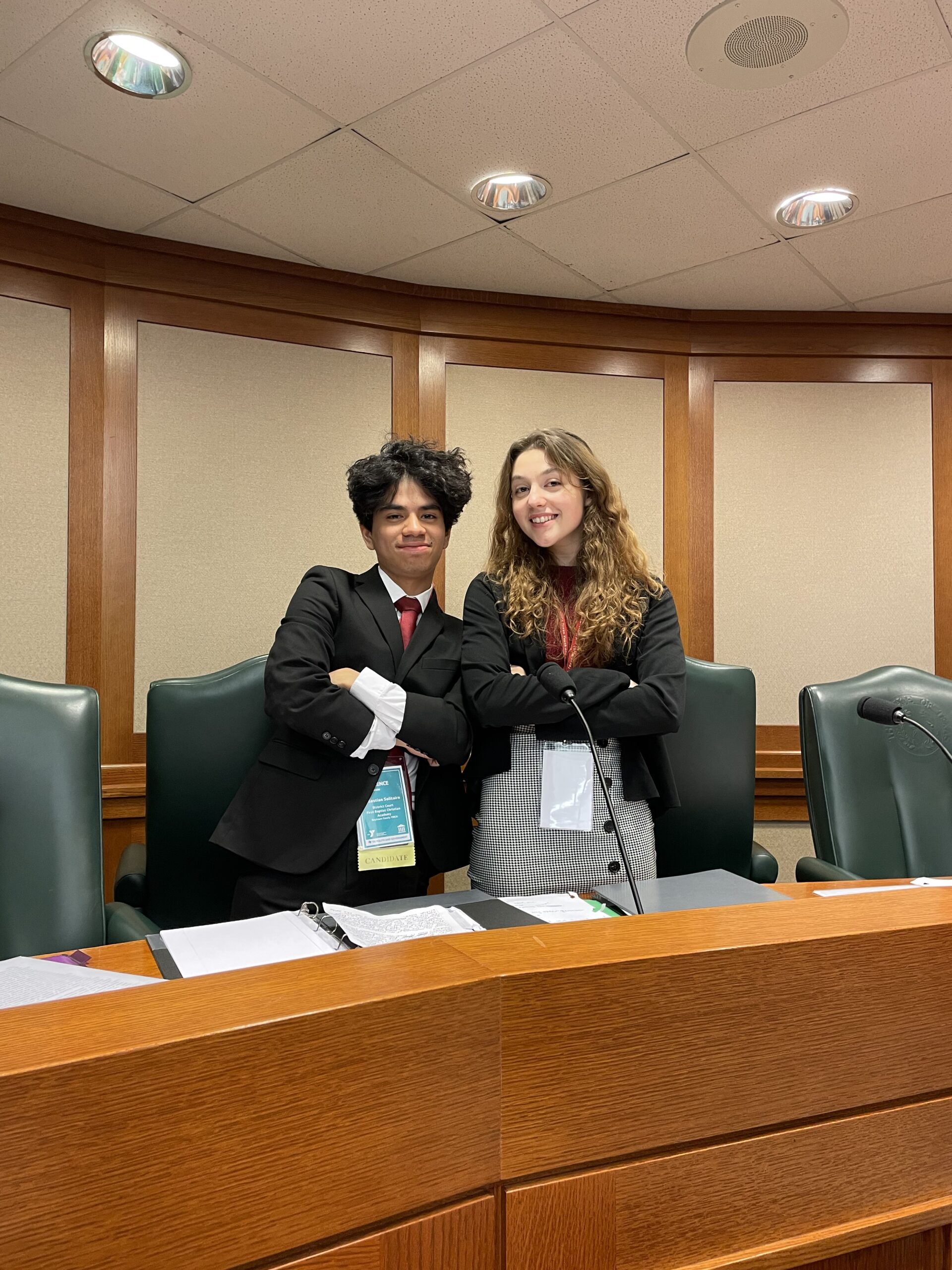“Objection!” echoed loudly across the courtroom as Texas Youth and Government judicial delegates debated the case of Dominico De Sole v. Ann Freedman in the Texas State Capitol during the 2022 Texas Youth and Government State Conference. The plaintiff, representing Dominico De Sole, is suing Ann Freedman for the selling of fraudulent artwork. The defense, representing Ann Freedman, is arguing that she was deceived and did not actively sell fraudulent paintings. To win this case, the plaintiff attorneys must meet the burden of proof, meaning Ann Freedman is found guilty of mail fraud, wire fraud, and racketeering activities, which can be found as a violation in 18 U.S. Code 1962 C, 18 U.S. Code 1341, and 18 U.S. Code 1343.
The plaintiff calls three witnesses to the stand, including Dominico De Sole, James Martin, and David Anfam. Dominico De Sole, the buyer of an $8.3 million dollar Mark Rothko painting, sold to him by Ann Freedman, is called to the stand. This specific Rothko painting is part of a larger Rosales Collection in the Knoedler Gallery, of which all of the artwork sales have been made by Ann Freedman, who is the president of the Knoedler Gallery. Dominico De Sole testifies that the information provided by Ann Freedman about the details of the painting are false. In addition to Dominico’s testimony, an invoice to Jim Kelly, Dominico De Sole’s art dealer, is entered into evidence, to prove wire fraud. The plaintiff’s second witness, James Martin was hired to examine the Rothko painting. He testified that he could not confirm the painting to be authentic, raising concerns of inconsistencies within the artwork. The plaintiff’s third and final witness, David Anfam, through his testimony, is established as an art historian, art critic, and art curator, whose career focuses on the works of Mark Rothko. While he was never hired to examine or authenticate the artworks, his name was still used by the Knoedler Gallery to authenticate the artworks based on Anfam’s opinion that the artwork was “beautiful”.
Ann Freedman, Laili Nasar, and Stephan Polcari all are called by defense attorneys to the stand. Ann Freedman is defined as a non-expert on paintings which causes her to rely on other art experts to authenticate the artworks she sells at Knoedler Gallery. Due to this, she is a non-reliable source for authentication. She testifies that David Anfam had shown interest in writing an essay on the Rothko piece, implying the painting was in fact authentic. Laili Nasar, the project manager for the Mark Rothko Catalogue Raisonne, testifies that although she never formally authenticated the painting, Ann Freedman used her name to promote the sale of the painting. Finally, the defense’s last witness Stephan Polcari, testifies that he was asked to view and author essays about the works that were part of Ann Freedman’s collection. He diverges from previous witnesses, stating that he believes there are no inconsistencies within the painting. Through his testimony, he posed that the time period when these paintings were created does not guarantee documentation of authenticity, therefore there is no way for Ann Freedman to know whether the painting is authentic or not.
Both the plaintiff’s and defense’s testimonies from the witnesses provide the audience with a broad scope of evidence to consider whether Ann Freedman should be found guilty in violation of multiple U.S. codes. Although, the testimonies made by Dominico De Sole, James Martin, and David Anfam, in addition to stipulated facts agreed upon by both parties, demonstrate the incriminating actions of Ann Freedman. She ignored the concerns raised by James Martin, and disregarded respect when incorrectly using both David Anfam and Laili Nasar’s names. Moreover, the stipulated facts state, “Ann Freedman had a profit sharing agreement with Knoedler for 30% of the same.” It can be concluded that Ann Freedman’s motivation in selling fraudulent artworks was to receive a profit. The stipulated facts go on to state that, “Martin’s analysis agreed with the Dedalus conclusions and asserted that the canvas backs and pigments on the surface post-dated the attributed dates of the works by at least ten years and were inconsistent with the understanding that the paintings were made in the 1950s.” This clearly shows that Ann Freedman knew there were inconsistencies with the painting before she sold it to Dominico De Sole.

Attorneys on the case this year at the state conference agree with this conclusion. When asked about the ruling of the case, attorney Sebastian Solitaire from First Baptist Christian Academy said, “After reading through the case countless times, I leaned more towards Ann Freedman being guilty rather than ignorant.”
Considering the evidence presented and the characteristics of the case, I believe that Ann Freedman should be found guilty of violating 18 U.S. Code 1962 C, 18 U.S. Code 1341, and 18 U.S. Code 1343.
Written by: Kristen Henderson
